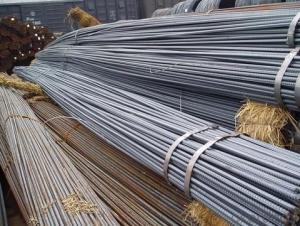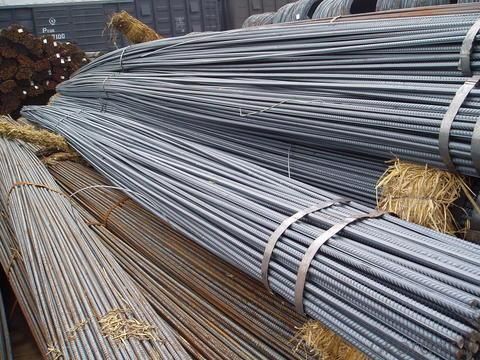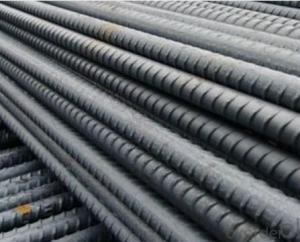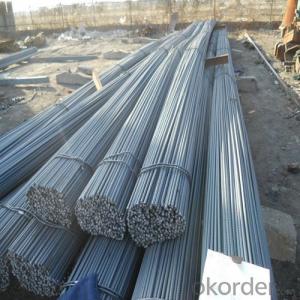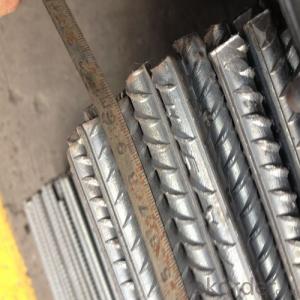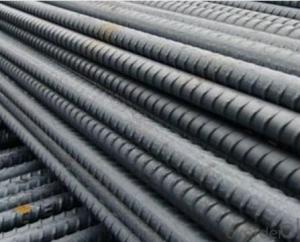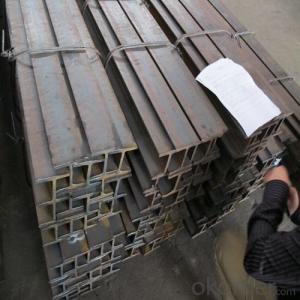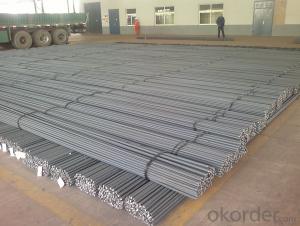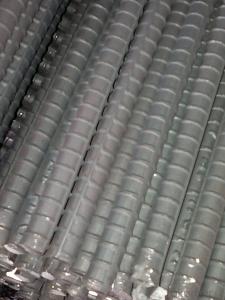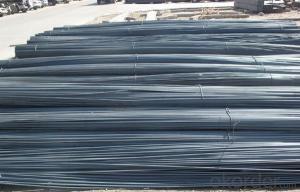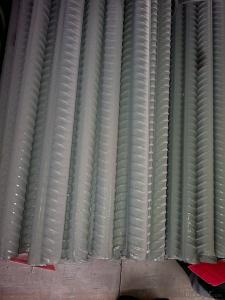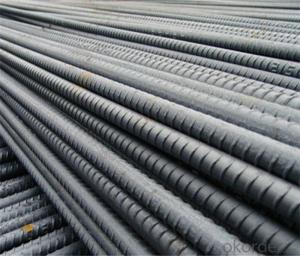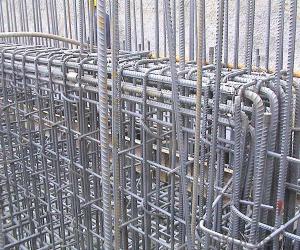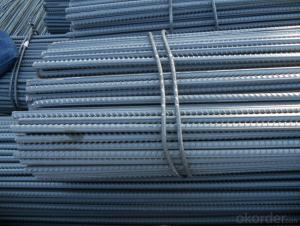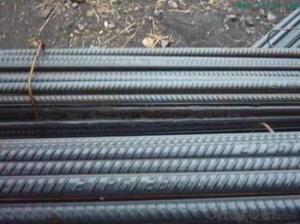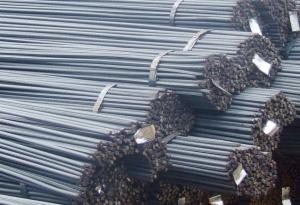Deformed Bar / Reinforcing Steel Bar with Different Function
- Loading Port:
- Tianjin
- Payment Terms:
- TT or LC
- Min Order Qty:
- 27 m.t.
- Supply Capability:
- 20000 m.t./month
OKorder Service Pledge
OKorder Financial Service
You Might Also Like
Product Description of Deformed Bar / Reinforcing Steel Bar with Different Function:
1. Length: 6m-12m as standard.
2. Reputation first, best competitive price, high quality, quotes price promptly and confirm the delivery on time!
3. Application : Used for housing construction.
4. PRICE: Keep lower operating costs so as to offer competitive price for our clients.
5. Minimum Order Quantity: 300 MTS as per size.
6. Invoicing: Actual or Theoretical Weight Basis as buyer’s request.
7. Payment terms: TT payment in advance or irrevocable LC at sight.
8. Delivery time: 25-30 days after we receive your TT payment at sight
.Product Applications of Deformed Bar / Reinforcing Steel Bar with Different Function:
Deformed Bar / Reinforcing Steel Bar with Different Function are ideal for structural applications and are widely used in construction and manufacturing. Carbon steel wire rod is mainly used for reinforcement of reinforced concrete and welded structure or reprocessed (roberts , nail, etc.) materials, especially used to produce wire drawing, welding electrode, nails, spring, electronic, precise machinery parts and so on.
Product Advantages of Deformed Bar / Reinforcing Steel Bar with Different Function:
OKorder's Deformed Bar / Reinforcing Steel Bar with Different Function are durable, strong, and wide variety of sizes. They are newly produced by good quality steel billets.
Main Product Features of Deformed Bar / Reinforcing Steel Bar with Different Function:
· Premium quality
· Prompt delivery & seaworthy packing (30 days after receiving deposit)
· Can be recycled and reused
· Mill test certification
· Professional Service
· Competitive pricing
Product Specifications of Deformed Bar / Reinforcing Steel Bar with Different Function:
Steel Grade: SAE1006-1018B
Standard: ASTM, GB
Diameter: 5.5mm, 6.5mm, 7mm,8mm,9mm,10mm,12mm,14mm
Type: in coil, coil weight around 2MT
Alloy or Not: Alloy
Technique: Hot Rolled
Place of Origin: China Mainland
Surface: round, no twisted, light and smooth
FAQ:
Q1: Why buy Hot Rolled Low Carbon Steel Wire Rods for Nails, Steel Wire Mesh from OKorder.com?
A1: All products offered byOKorder.com are carefully selected from China's most reliable manufacturing enterprises. Through its ISO certifications, OKorder.com adheres to the highest standards and a commitment to supply chain safety and customer satisfaction.
Q2: How do we guarantee the quality of our products?
A2: We have established an advanced quality management system which conducts strict quality tests at every step, from raw materials to the final product. At the same time, we provide extensive follow-up service assurances as required.
Q3: How soon can we receive the product after purchase?
A3: Within three days of placing an order, we will arrange production. The normal sizes with the normal grade can be produced within one month. The specific shipping date is dependent upon international and government factors, the delivery to international main port about 45-60days.
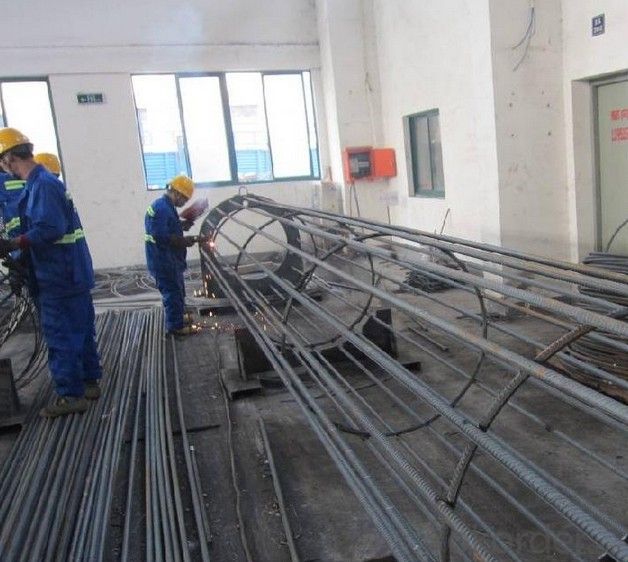
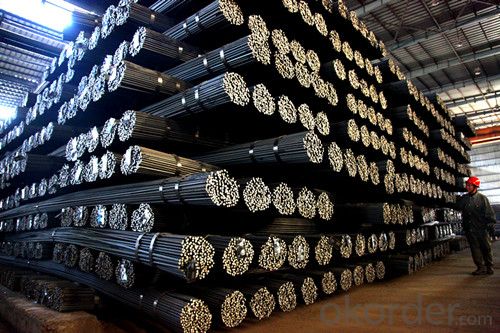
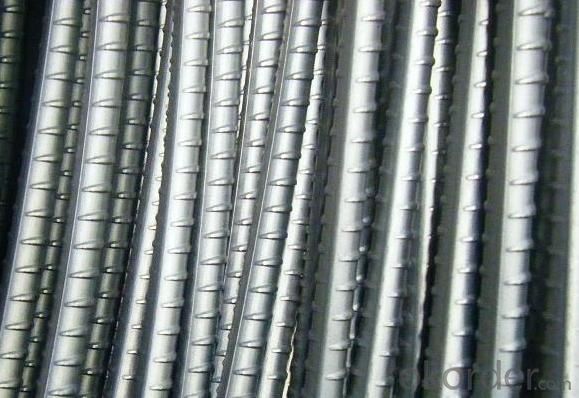
- Q: Are steel rebars suitable for use in structures with aggressive soil conditions?
- Steel rebars are generally suitable for use in structures with aggressive soil conditions. However, it is important to consider the specific characteristics of the soil and the potential impact it may have on the rebars. Aggressive soil conditions typically involve high levels of moisture, acidity, or corrosive substances. In such cases, the rebars may be at risk of corrosion, which can weaken the structural integrity of the entire construction. To mitigate the risk of corrosion, various measures can be taken. One common method is to use corrosion-resistant steel rebars, such as stainless steel or epoxy-coated rebars. These materials provide an extra layer of protection against aggressive soil conditions. Furthermore, proper design and construction techniques can also help to minimize the impact of aggressive soil conditions on the rebars. Adequate drainage systems, waterproofing measures, and protective coatings can all be implemented to prevent the soil from directly contacting the rebars. It is crucial to consult with structural engineers and experts in soil science to assess the suitability of steel rebars in structures with aggressive soil conditions. They can provide valuable insights and recommendations to ensure the longevity and safety of the structure.
- Q: What are the best practices for handling and storing steel rebars on a construction site?
- Some best practices for handling and storing steel rebars on a construction site include: 1. Properly stacking and bundling rebars to prevent accidents and injuries. Ensure that they are stored in a well-organized manner to minimize the risk of collapsing stacks. 2. Use appropriate lifting equipment, such as cranes or forklifts, to handle and move rebars safely. Avoid dragging or rolling them on the ground, as this can cause damage and compromise their structural integrity. 3. Protect rebars from exposure to moisture, excessive heat, and corrosive substances. Store them in a dry and covered area to prevent rusting and degradation. 4. Label rebars with relevant information, such as size, type, and grade, to ensure proper identification and usage. This helps in maintaining accurate inventory and preventing mix-ups during construction. 5. Regularly inspect rebars for any signs of damage, such as bends, cracks, or excessive rust. Damaged rebars should be removed from the site and replaced to maintain structural integrity. 6. Train construction workers on safe handling and storage practices for rebars, emphasizing the importance of following guidelines and using appropriate personal protective equipment (PPE). By adhering to these best practices, construction sites can ensure the safety and integrity of steel rebars, contributing to the overall success of the project.
- Q: Can steel rebars be used in wastewater treatment plant construction?
- Certainly, steel rebars are applicable for the construction of wastewater treatment plants. They are frequently utilized in the development of reinforced concrete structures, specifically in the context of wastewater treatment facilities. These rebars contribute to the concrete's enhanced strength and durability, enabling it to endure the harsh and corrosive conditions commonly encountered in such facilities. To shield the rebars from the corrosive impact of wastewater, they are typically coated with epoxy or other corrosion-resistant substances. Furthermore, the proper design and positioning of the rebars guarantee the structural soundness and longevity of the treatment plant. In conclusion, steel rebars serve as a widely employed and effective reinforcement material in wastewater treatment plant construction.
- Q: How do steel rebars affect the overall sustainability certifications of a structure?
- The sustainability certifications of a structure can be significantly influenced by steel rebars. Certifications like LEED or BREEAM assess a building's environmental performance based on various factors, including the materials used. The sustainability of a structure can be affected by the production and use of steel rebars in several ways. Firstly, the production of steel consumes a significant amount of energy and emits greenhouse gases. However, many steel manufacturers have implemented energy-efficient technologies and use recycled materials to reduce their environmental impact. Therefore, the sustainability of steel rebars depends on production methods and the extent of recycled content. The durability and longevity of steel rebars also play a crucial role in a structure's sustainability. Steel's strength and resilience can greatly enhance a building's lifespan, reducing the need for frequent repairs and replacements. This reduces material waste and energy consumption associated with ongoing maintenance. Moreover, steel rebars contribute to a building's overall structural efficiency. By reinforcing concrete, they improve structural integrity and load-bearing capacity, allowing for more efficient use of materials. This leads to reduced material consumption and waste during construction, which is vital for sustainability. Additionally, steel rebars can be recycled at the end of a building's life cycle. Steel is a highly recyclable material that can be repurposed into new rebars or other steel products, reducing the demand for new materials. This recycling process further minimizes the environmental impact of steel production. In conclusion, steel rebars impact the sustainability certifications of a structure through production methods, durability, structural efficiency, and recyclability. By employing sustainable production methods, enhancing durability, optimizing material usage, and promoting recycling, steel rebars can positively contribute to a building's sustainability and help achieve higher sustainability certifications.
- Q: What are the guidelines for inspecting steel rebars on a construction site?
- Inspecting steel rebars on a construction site requires adherence to specific guidelines to ensure the structural integrity and compliance with safety standards. Here are some essential guidelines for inspecting steel rebars: 1. Visual Inspection: Begin by visually assessing the entire rebar installation, checking for any signs of damage, rust, or corrosion. Look for proper alignment, spacing, and placement of rebars as per the construction drawings. 2. Rebar Size and Type: Verify that the rebars used match the specifications outlined in the construction plans. Inspect the size, grade, and type of steel rebars to ensure they meet the required standards and are suitable for the intended load-bearing capacity. 3. Placement and Spacing: Ensure that rebars are properly spaced and positioned according to the design drawings. Check for proper lap length (the overlapping of rebars) to ensure structural stability and load distribution. 4. Clear Cover: Inspect the clear cover, which is the distance between the outer surface of the rebar and the surface of the concrete. Verify that the clear cover meets the specified requirements, as it is crucial for corrosion protection and structural durability. 5. Vertical Alignment: Check the vertical alignment or plumbness of the rebars. They should be straight and in line with the required position, avoiding excessive bending or curving. 6. Rebar Connections: Inspect the connections between rebars, such as lap splices or mechanical couplers. Verify that the connections are properly made and comply with approved construction standards. 7. Welding: If welding is used to join rebars, ensure that it is performed by certified welders and meets the required specifications. Inspect the quality of welding joints, including the penetration depth and the absence of defects or cracks. 8. Protective Coating: Verify the presence and condition of any protective coating applied to the rebar, such as epoxy coatings or galvanization, to prevent corrosion and increase longevity. 9. Documentation: Maintain detailed records of the inspection process, including photographs, measurements, and any deviations or corrective actions taken. These records will serve as essential documentation for quality control and future reference. 10. Compliance with Codes and Standards: Ensure that the inspection adheres to relevant local building codes, industry standards, and project specifications. Familiarize yourself with the applicable regulations to ensure compliance throughout the inspection process. By following these guidelines, construction site inspectors can help ensure the quality, safety, and longevity of steel rebars, ultimately contributing to the overall success of the construction project.
- Q: Are steel rebars prone to bending or warping?
- Steel rebars are not generally prone to bending or warping under normal conditions. Steel rebars are designed to have high tensile strength and are commonly used in construction projects to reinforce concrete structures. They are made from strong and durable materials such as carbon steel, which provides them with the ability to withstand heavy loads and resist deformation. However, it is important to note that external factors such as excessive heat or improper handling during transportation and storage can potentially cause rebars to bend or warp. Exposing steel rebars to high temperatures can cause them to lose their structural integrity and become more susceptible to bending or warping. Similarly, mishandling or poor storage practices, such as stacking them unevenly or placing heavy objects on top of them, can lead to deformation. To ensure the structural integrity of steel rebars, it is crucial to follow proper handling and storage guidelines, as well as ensure that they are used within the specified load limits. Additionally, it is essential to consider the environmental conditions in which the rebars will be utilized to minimize the risk of bending or warping.
- Q: What is the effect of steel rebars on the electrical conductivity of concrete?
- Concrete's electrical conductivity is significantly influenced by steel rebars. The inclusion of steel rebars in concrete enhances its overall electrical conductivity as steel is an excellent conductor. This is because steel rebars create a network of conductive paths within the concrete, facilitating the smooth flow of electrical current. Considering the electrical conductivity of concrete is crucial, particularly in situations that necessitate electrical grounding or conductivity. Steel rebars play a vital role in establishing a low-resistance pathway for electrical current, enhancing the overall electrical conductivity of the concrete structure. Nevertheless, it is important to acknowledge that the presence of steel rebars can pose challenges in certain scenarios. For instance, in electrical installations requiring insulation or areas where electrical isolation is essential, the conductivity provided by steel rebars may not be desired. In such cases, additional measures such as insulation or isolation techniques must be employed to prevent undesired electrical currents from traversing through the concrete. In conclusion, the impact of steel rebars on the electrical conductivity of concrete is contingent upon the specific requirements and applications of the concrete structure. A thorough understanding of the intended use and the implementation of appropriate measures will ensure that the electrical conductivity of the concrete meets the desired specifications.
- Q: Can steel rebars be used in foundations and footings?
- Certainly, steel rebars are suitable for use in foundations and footings. In fact, these applications commonly employ steel rebars owing to their exceptional tensile strength and durability. Typically composed of carbon steel, steel rebars reinforce concrete structures effectively, bolstering their resistance against tension and bending forces. By integrating rebars into the concrete, additional strength is provided, mitigating the risk of cracking or failure when subjected to heavy loads. Consequently, utilizing steel rebars in foundations and footings is an established construction practice, guaranteeing the stability and longevity of the structure.
- Q: Why can't grounding steel be used?
- In addition, the skin effect of the current, the thread of the threaded steel surface, is equivalent to the addition of an inductance, which is detrimental to the rapid unloading of the high-frequency lightning current
- Q: How do steel rebars contribute to the overall energy efficiency of a structure?
- Steel rebars contribute to the overall energy efficiency of a structure by enhancing its durability and strength. By reinforcing the concrete, they help to prevent cracks and ensure structural integrity, reducing the need for repairs and maintenance over time. This longevity reduces the energy consumption associated with frequent repairs and replacements, ultimately making the structure more energy-efficient.
Send your message to us
Deformed Bar / Reinforcing Steel Bar with Different Function
- Loading Port:
- Tianjin
- Payment Terms:
- TT or LC
- Min Order Qty:
- 27 m.t.
- Supply Capability:
- 20000 m.t./month
OKorder Service Pledge
OKorder Financial Service
Similar products
Hot products
Hot Searches
Related keywords
